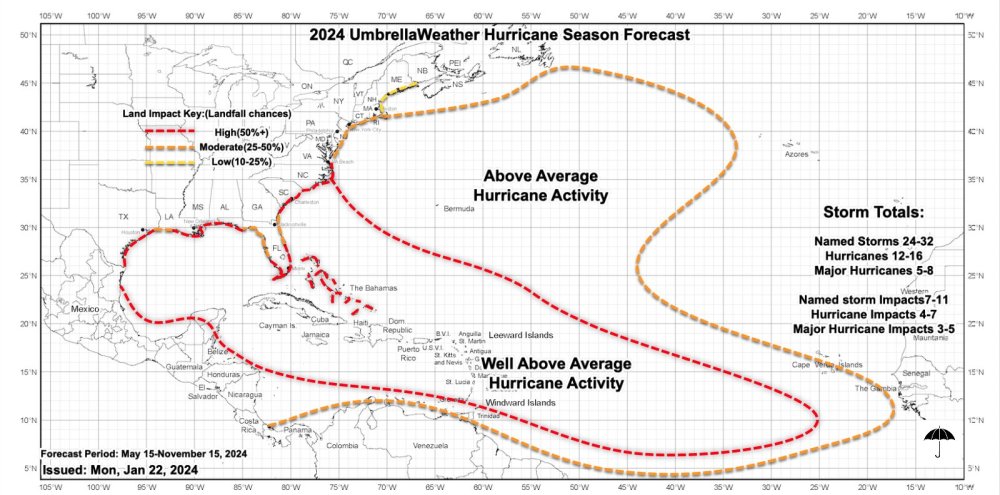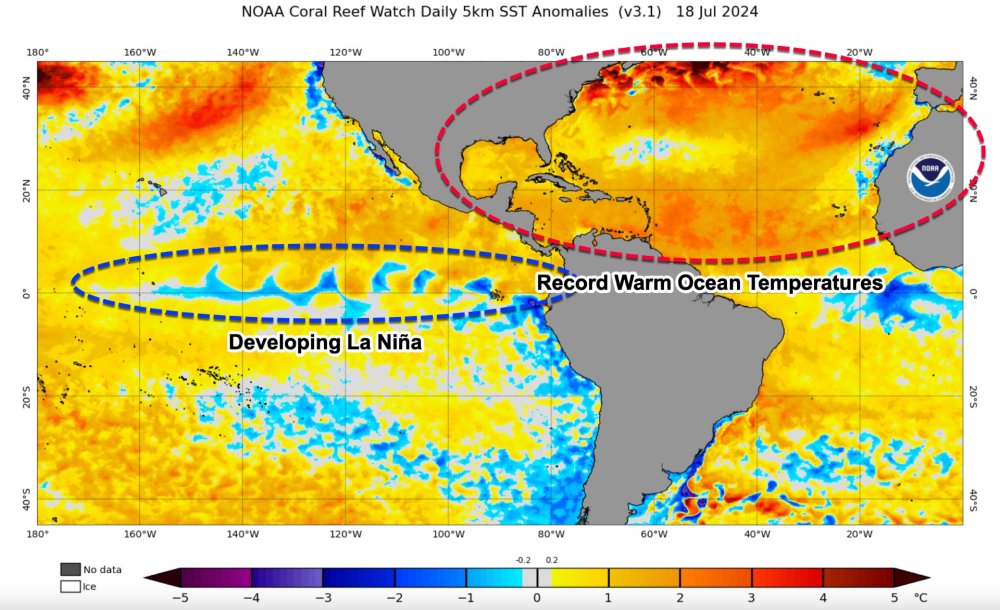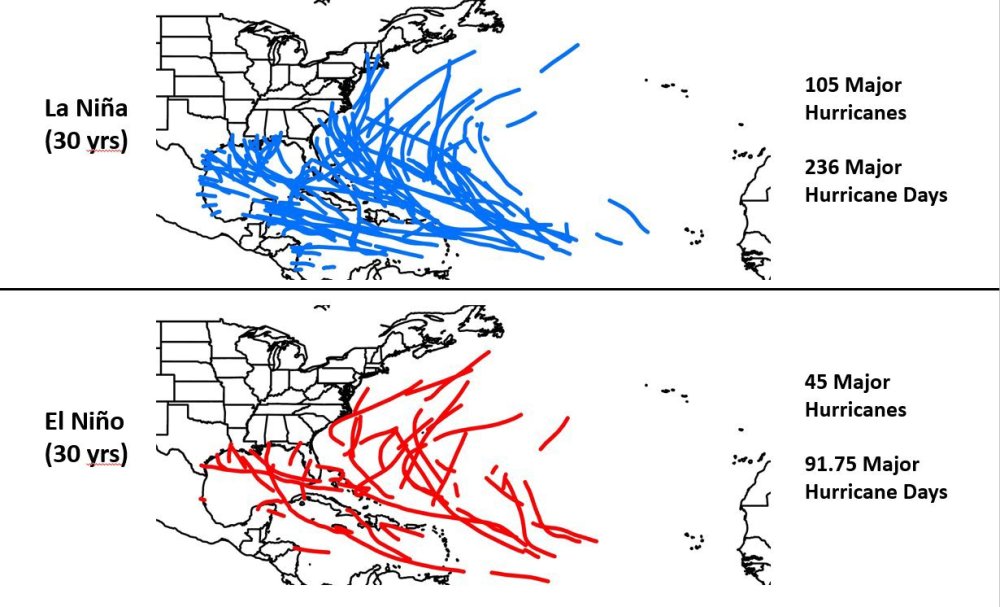UmbrellaWeather/T3 hurricane season update
The 2024 hurricane season already is off to a fast start with the earliest Category 5 storm on record with Hurricane Beryl. This storm went on to significantly impact Texas and then the Midwest and was blamed for at least 27 deaths.
Beryl likely is a precursor of things to come during the remainder of hurricane season, which runs through November, and there are preparations superintendents can start on now to be ready.
Beginning in early to mid-August, conditions over the Atlantic will become more favorable for tropical system development. Combine this with record-warm water temperatures and a developing La Niña that will lower wind shear across the Atlantic basin, these tropical systems that develop will have conditions ripe for intensifying into hurricanes. Stronger-than-normal high pressure over the central and eastern Atlantic will favor some of these storms to track west toward the Caribbean, southwest Atlantic and Gulf of Mexico, which is why there is cause for concern for increased hurricane activity.
Why so much confidence?
Record-warm temperatures in the Atlantic will be impactful to the U.S. Warm ocean temperatures act as fuel for hurricanes, and this season there is plenty of that.
Conversely, colder-than-normal water temperatures expand over the Equatorial Pacific west of South America. This signals a developing La Niña. La Niña ocean patterns in the Pacific typically lead to above-normal Atlantic hurricane activity due to the pattern lessening wind shear over much of the Atlantic Basin and creating more favorable conditions for tropical development. Meanwhile, an El Niño tends to have the opposite effect on Atlantic hurricane activity. In fact, a La Niña tends to have twice as much hurricane activity than an El Niño in the Atlantic.
Analogs also play a part in hurricane predictions. Analogs are past years that have similar background states to the current time period, and are used to make longer-range forecasts. Other hurricane seasons that have had warm Atlantic temperatures, and a developing La Niña and how those hurricane seasons fared can be used to predict this year's season.
Some analogs used to predict the 2024 season
- 1995 - 3 U.S. hurricane landfalls (1 major) - $17.9 billion in total damages
- 1998 - 3 U.S. hurricane landfalls (2 major) - $27.0 billion in total damages
- 2005 - 6 U.S. hurricane landfalls (3 major) - $198.4 billion in total damages
- 2017 - 2 U.S. hurricane landfalls (2 major) - $195.5 billion in total damages
- 2020 - 6 U.S. hurricane landfalls (3 major) - $45.4 billion in total damages
U.S. average hurricane season
- 4 U.S. hurricane landfalls
- 2.8 U.S. major hurricane landfalls
- $96.6 billion in total U.S. damages
What areas will be impacted?
This is the most difficult aspect of hurricane season forecasting. While exact tracks are on a storm-by-storm basis and can only be predicted once storms develop and are on the playing field, we can use analogs, climatology, and the current state of conditions to give us a picture of who is most at risk. US landfall impacts go through the roof during La Niña seasons. More storms = more chances for storms to impact land.
Highest chance of impact in 2024
Very high risk
- Florida — 75% chance of a hurricane impact (normal is 56%)
- Louisiana — 56% chance of a hurricane impact (normal is 38%)
- North Carolina — 56% chance of a hurricane impact (normal is 38%)
- Texas* — 54% chance of a hurricane impact (normal is 36%)
High risk
- Georgia — 46% chance of a hurricane impact (normal is 30%)
- South Carolina — 44% chance of a hurricane impact (normal is 29%)
- Alabama/Mississippi — 43% chance of a hurricane impact (normal is 28%)
Moderate risk
- Virginia to Maine — vary from 10-30% chance of hurricane impact(normal is 9-20%)
*Texas already has a hurricane impact, so this forecast will be for the rest of the season
How to prepare
Consider any long-range preparations or decisions that can be made with the information above in mind, such as removing or pruning "wind risk" trees, drainage improvements, etc.
Those in the potential path of a hurricane should consider what short-range decisions will need to be made.
For more information, follow UmbrellaWeather and T3 on X, or contact Garrett Bastardi of T3 Golf.




